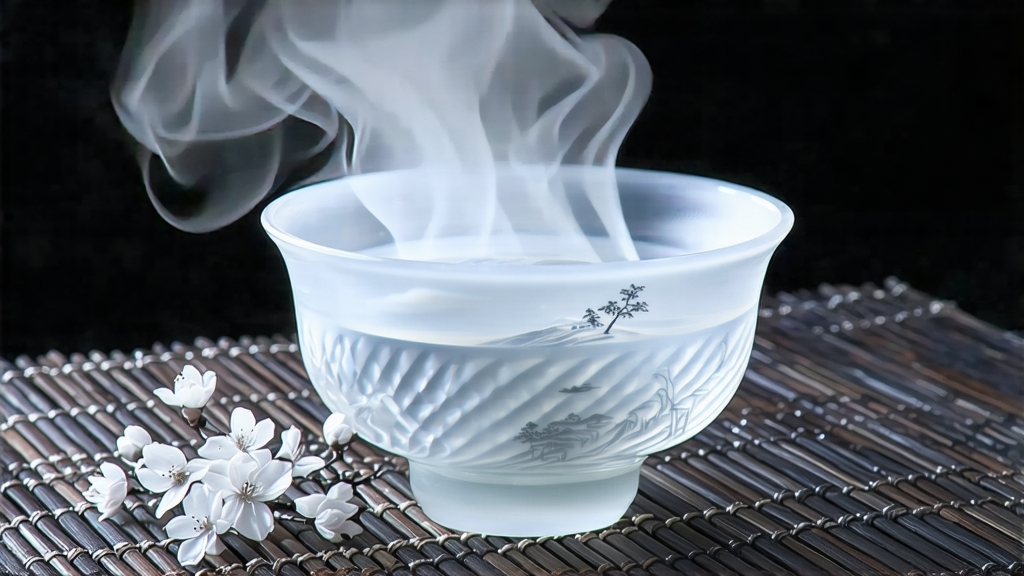
Among the six great families of Chinese tea, white tea is the least theatrical yet the most elusive. It is not rolled, not roasted, not shaken; it is simply allowed to be. Of its minimalist triad—Silver Needle, White Peony, Shou Mei—Bai Hao Yin Zhen, the “White-Hair Silver Needle,” sits at the apex like a piece of captured moonlight. To understand China’s oldest recorded tea genre, one must begin with this single-bud aristocrat that has been quietly defining elegance for almost a millennium.
History: from imperial elixir to global muse
Song-dynasty emperor Huizong (1082-1135) praised “white buds among the tribute cakes” in his Da-Guan Tea Treatise, the first textual hint of a tea valued for its downy tips rather than its leaf. When Ming Taizu abolished compressed tea in 1391, loose-leaf white tea emerged from the mountains of northern Fujian, carried along the ancient Tea Road to Mongolia and Tibet. European merchants meeting it in Canton in 1690 christened it “Pekoe,” a corruption of Bai Hao, the white down that coats each needle. By the late Qing it was gifted to Queen Victoria; legend claims she served it in porcelain so thin the buds appeared to float in air. Today Silver Needle is the benchmark against which all white teas are judged, yet it remains a micro-production: one kilogram demands thirty thousand hand-plucked buds.
Terroir: where ocean mist meets volcanic soil
Authentic Silver Needle comes only from Fuding and, in smaller lots, from neighboring Zhenghe, both in Fujian province. The region’s signature red-yellow lateritic soil is rich in iron and quartz, drained by subtropical monsoons that leave the air permanently perfumed with orange-blossom and sea-salt. Day-night temperature swings of 10 °C slow bud growth, concentrating amino acids that later translate into a velvety sweetness. The highest-grade material is picked in a fleeting seven-day window after Qingming (early April) when the buds reach 2.5–3 cm but have not yet unfurled. Pickers work against the dawn dew, wearing cotton gloves to avoid bruising the trichomes whose silvery reflection gives the tea its name.
Craft: the art of doing almost nothing
Once picked, the buds are laid on bamboo trays only one layer deep and left to wither for thirty-six to forty-eight hours. No heat, no manipulation—just the mountain breeze funneling through open windows of the withering loft. Master tea makers describe their job as “reading the weather.” If humidity spikes above 75 %, they shift trays closer to the charcoal-heated floor; if the sun grows too fierce, reed mats are rolled overhead to filter the light. The goal is to reduce moisture to 8–10 % while preserving the oxidative enzymes in a state of suspended animation. This “micro-oxidation” endows Silver Needar with its characteristic pale apricot liquor and the capacity to age for decades. Finished tea is sorted by eye: only buds that are straight, unbroken and uniformly silver are granted the name Yin Zhen.
Chemistry in the cup
Silver Needle contains the highest level of theanine (2.5–3 %) of any Chinese tea, yielding a brothy umami reminiscent of fresh bamboo shoot. Its catechin profile is dominated by EGCG, but in lower concentrations than green tea, resulting in a softer astringency. Volatile compounds include linalool and geraniol, responsible for the subtle honeysuckle note that appears after the third infusion. Because the buds are picked before the plant’s lignin hardens, cellulose content is low, allowing the needles to steep slowly and gracefully without turning bitter.
Aging: the tea that learns to walk
Unlike most whites, Silver Needle improves with time. Stored in breathable paper within a clay jar, it undergoes slow auto-oxidation and Maillard reactions that darken the leaf and deepen the liquor into amber. A 2013 vintage acquires aromas of dried longan and white truffle; after fifteen years it can mimic aged sheng pu-erh in complexity yet retains a crystalline brightness. Connoisseurs in Hong Kong trade decade-old cakes like vintage Burgundy, noting that each lunar year adds a whisper of new character.
Brewing: choreography of restraint
Western method: 3 g per 250 ml, 85 °C, three minutes.